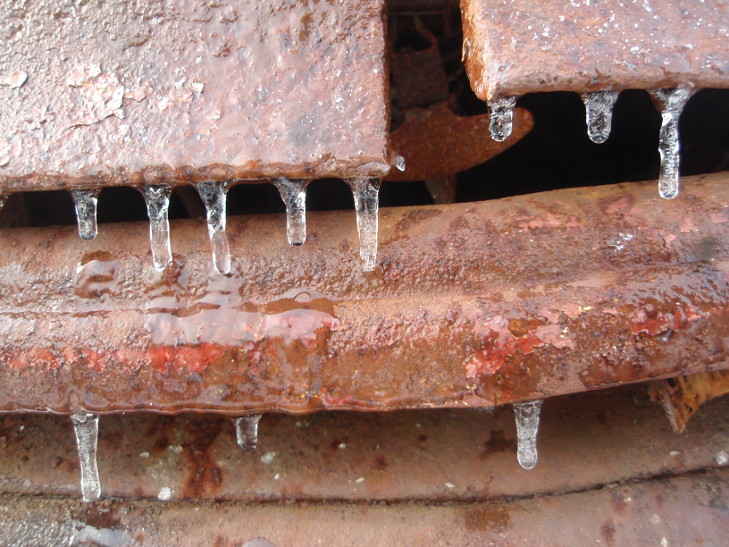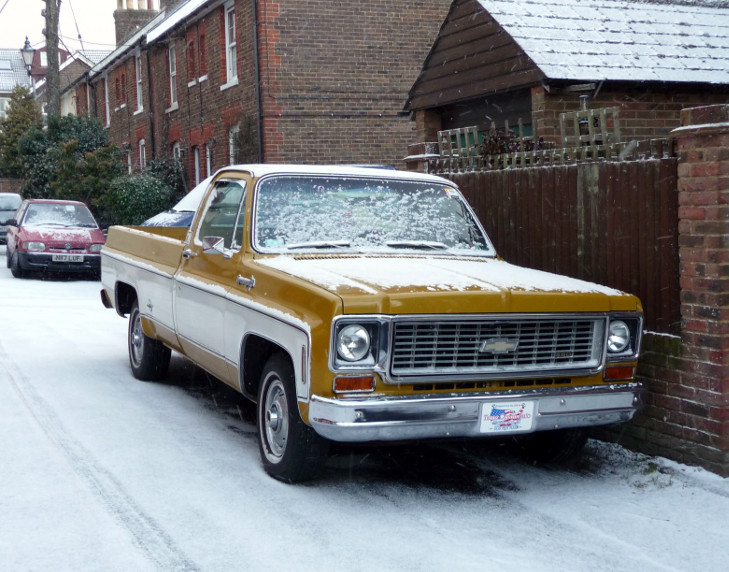Keep the Winter From Ruining Your Classic Chevy

Photo Credit: Joelk75
The winter is here for most of us around the United States and many classic Chevy owners are scrambling to stay ahead of winter-related damage.
Obviously, we're not talking about damage sustained in a collision or other driving-related incident – we're talking about damage from the elements. A bad winter can be very damaging to a classic car, so much so that it's worth taking some specific actions to prevent damage from occurring.
Here's a few suggestions for keeping your classic safe from the winter weather until spring returns.
The Danger: Road Salt
We could almost hear you cringe when you saw that term. If you live in areas where it snows, road salt is the bane of your existence as a classic car owner. Many people actually garage their collectibles and valuable rides and drive their beat-up daily drivers exclusively in the winter to avoid salt, and quite frankly that's probably the best option.
However, when you can't or don't want to put your car into hibernation mode, road salt damage is no casual concern. Your vehicle's undercarriage can sustain substantial damage from salt, much of which won't be visible until it's too late.
Road salt damage prevention tips:
- Wash your car thoroughly and apply a good coat of wax before winter begins.
- Re-wash your car regularly, and re-wax your vehicle bi-monthly
- Apply rust preventative paint to your vehicle's undercarriage annually
- Ensure all fittings and seals are closed and free from damage
- Rinse away road salt from your vehicle's undercarriage as often as possible, being sure to park your vehicle in a heated garage so that the undercarriage can dry quickly (bust out a couple of fans to facilitate drying if necessary)
The Danger: Moisture
When you live in an area that is cold enough to keep ice and snow around all season, moisture is going to be a challenge to deal with. Unfortunately, older cars and moisture just don't mix. Many of the salt damage prevention steps outlined above will also help to minimize moisture damage, so be sure refer to these steps (even if you're not in an area that uses salt on the road).

Photo Credit: gS32tom
Additionally, make sure your vehicle's weatherstripping is in good condition, as it will prevent moisture from getting inside your car and damaging the interior. Check any body plugs and grommets - and especially floor pan drain plugs - for damage and repair whatever you find.
Finally, owners of cars with soft tops must be particularly vigilant about roof damage and thoroughly inspect this area for imperfect seals.
The Danger: Improper Storage
Storing your classic during the winter isn't necessarily fun, but it's a prudent idea that can greatly reduce the risks associated with winter driving. After all, it's not jut road salt and moisture that you have to worry about in the winter – there's also the increased risks of being involved in a collision.

Photo Credit: Rob_sg
Some basic long-term vehicle storage tips:
- Wash and wax before storing
- Change all essential fluids prior to storage, and be sure to pour some fuel stabilizer into your gas tank too.
- If it makes sense to do so, a 30-45 minute drive on a nice winter day can be a great way to keep everything lubricated and damage free.
- Make sure the vehicle is dry every time you park it – wipe down the body, park in a heated garage (if possible), and consider using fans to facilitate drying.
- A dehumidifier is a great investment in some storage situations
- Open boxes of baking soda can be used as a desiccant, soaking up ambient moisture inside your vehicle's interior. You can also purchase large silica packs designed precisely for this purpose.
Finally, you might check with your local automotive museums about long-term storage options. While not necessarily cheap, the local museum is climate controlled and imminently familiar with long-term storage best practices.
Good luck with your Chevy this winter!